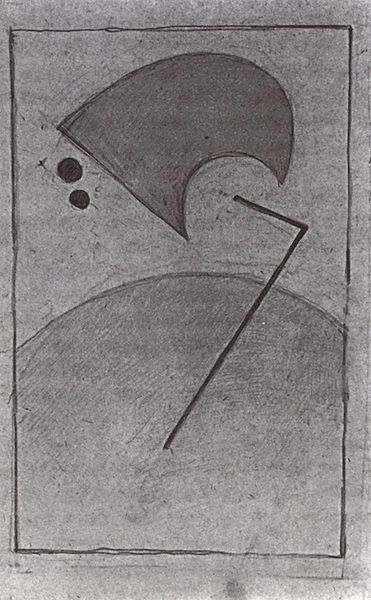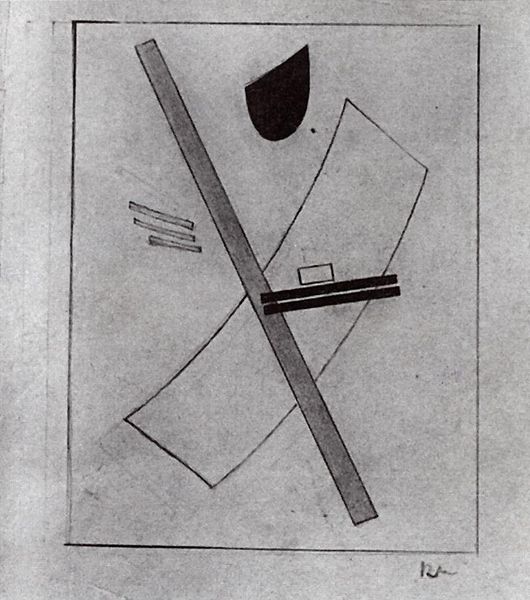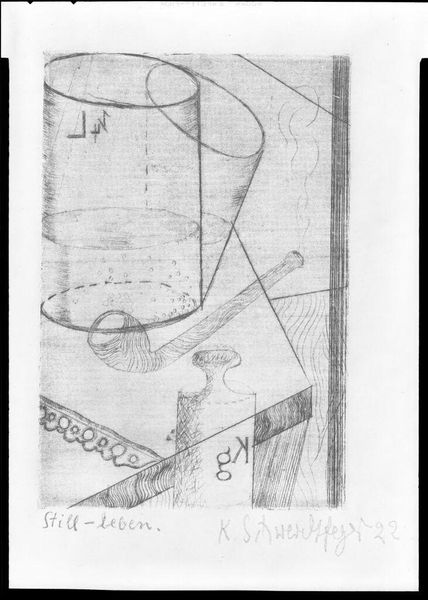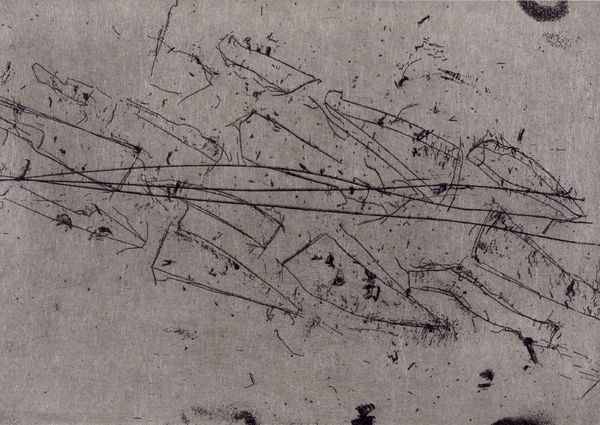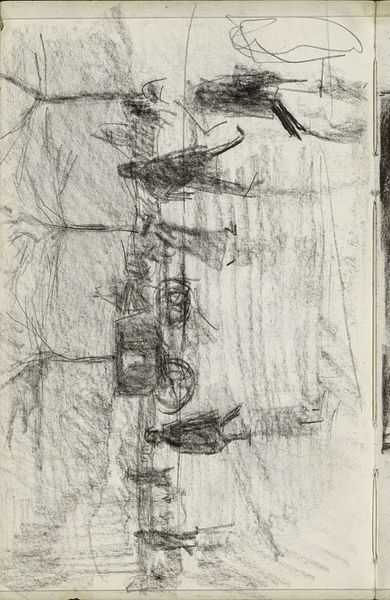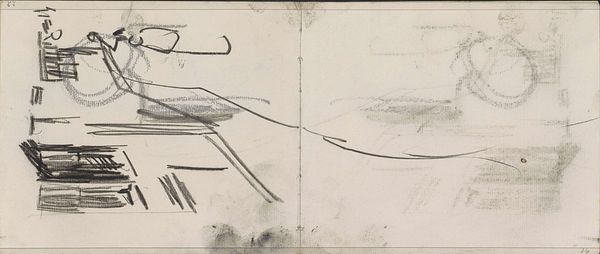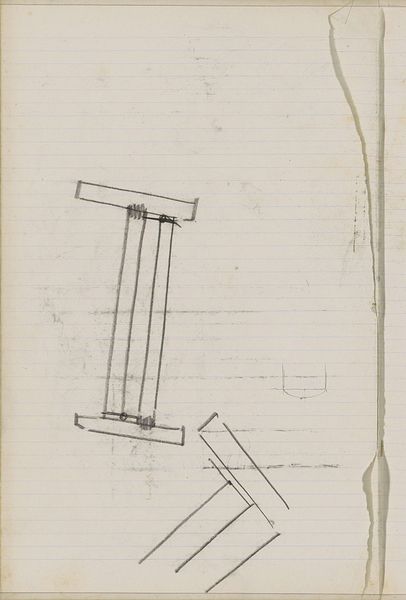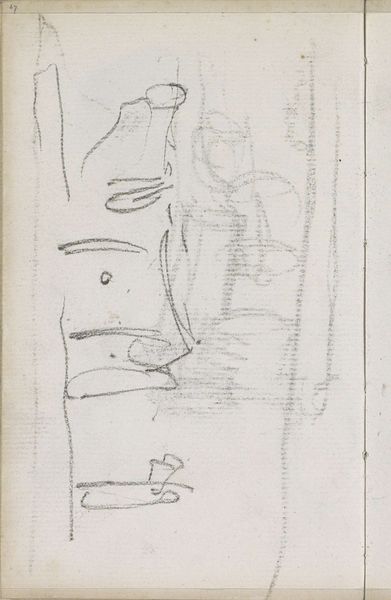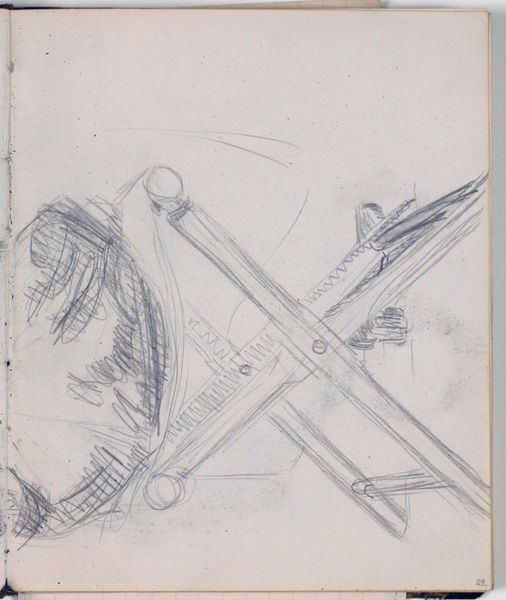
Copyright: Public domain
Kazimir Malevich made this drawing, Suprematic Elements, likely in the early 1920s during a tumultuous period in Russian history. With its geometric shapes floating against a neutral background, it exemplifies Suprematism, an art movement Malevich founded. Suprematism sought to transcend the representational art traditions of the past and create a purely abstract visual language. In post-revolutionary Russia, there was a widespread belief that art could and should help to create a new and better world. Malevich's non-objective forms were meant to express a new kind of consciousness, one that was free from the constraints of the material world. The Russian avant-garde was closely linked to the political and social ideals of the revolution. Artists questioned the institutions of art, hoping to help create a more egalitarian society. To fully understand "Suprematic Elements," it is essential to consider the social and institutional context in which it was created. Researching the history of Suprematism, the Russian Revolution, and the role of art in shaping social change can provide insight into this artwork's historical significance.
Comments
No comments
Be the first to comment and join the conversation on the ultimate creative platform.
